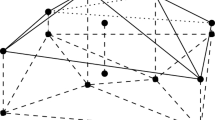In this paper, the estimation of the unknown parameters of the inverted modified Lindley distribution using the concept of dual generalized order statistics is investigated from both classical and Bayesian viewpoints. Based on this considered distribution, first, the maximum likelihood estimator and approximate confidence interval of the model parameter are obtained using order statistics and lower record values. Next, we consider Bayes estimation under the symmetric loss function using a gamma prior. We also derived the highest posterior density credible interval based on the Metropolis–Hastings algorithm. Moreover, the results for single and product moments based on dual generalized order statistics using this distribution are derived. Based on order statistics and lower record values, Monte Carlo simulations are carried out to examine the enforcement of the proposed estimators, and a dataset is investigated for both order statistics and lower record values for illustrative purposes.




Similar content being viewed by others
References
C. Chesneau, L. Tomy, J. Gillariose, and F. Jamal, “The inverted modified Lindley distribution,” J. Stat. Theory & Pract., 14, No. 3 (2020), 10.1007/s42519-020-00116-5.
U. Kamps, A Concept of Generalized Order Statistics, B.G. Teubner Stuttgart (1995).
P. Pawlas, and D. Szynal, “Recurrence relations for single and product moments of lower generalized order from the inverse Weibull distribution,” Demonstratio Mathematica, 34, No. 2, 353-358 (2001).
M. Burkschat, E. Cramer, and U. Kamps, “Dual generalized order statistic,”. Metron LXI, 13-26 (2003).
R. U. Khan and D. Kumar, “On moments of generalized order statistics fromex-ponentiated Pareto distribution and its characterization,” Appl. Math. Sci. (Ruse), 4, 2711-2722 (2010).
R. U. Khan and M. A. Khan, “Dual generalized order statistics from family of J-shaped distribution and its characterization,” J. King Saud Univ. – Sci., 27, 285-291(2015).
M. J. S. Khan and S. Iqrar, “On moments of dual generalized order statistics from Topp-Leone distribution,”Communication in Statistics-Theory and Methods, 48, No. 3, 479- 492 (2019).
R. U. Khan, Z. Anwar, and H. Athar, “Recurrence relations for single and product moments of dual generalized order from exponentiated Weibull distribution,” Aligarh. J. Statist., 28, 37-45 (2008).
R. U. Khan and D. Kumar, “Expectation Identities of lower generalized order statistics from generalized exponential distribution and its characterization,” Mathematical Methods of Statistics, 20, 150-157 (2011).
D. Kumar and S. Dey, “Relations for moments of generalized order statistics from extended exponential distribution,” Am. J. Math. & Manag. Sci., 36, No. 4, 378-400 (2017).
D. Kumar, “On moments of lower generalized order statistics from exponentiated Lomax distribution, Am. J. Math. & Manag. Sci., 32, No. 4, 238-256 (2013).
D. Kumar, “Relations for marginal and joint moment generating functions of Marshall–Olkin extended Logistic distribution based on lower generalized order statistics and characterization,” Am. J. Math. & Manag. Sci., 32, No. 1, 19-39 (2013).
D. Kumar, “Lower generalized order statistics based on inverse Burr distribution,” Am. J. Math. & Manag. Sci., 35, No. 1, 15-35 (2016).
A. Gelman, J. B. Carlin, H. S. Stern, et al., Bayesian Data Analysis, 2nd Ed. Chapman and Hall/CRC, USA (2004).
S. M. Lynch, Introduction to Applied Bayesian Statistics and Estimation for Social Scientists, Springer, New York (2007).
M.-H. Chen and Q.-M. Shao, “Monte Carlo estimation of Bayesian credible and HRD intervals,” J. Comput. Graph. Stat., 8, No. 1, 69-92 (1999).
J. M. Pavia, “Testing goodness-of-fit with the kernel density estimator: GoFKernel,” J. Stat. Soft., 66, No. 1, 1-27 (2015).
D. Kundu, “Bayesian inference and life testing plan for the Weibull distribution in presence of progressive censoring,” Technometrics, 50, No. 2, 144-154 (2008).
M. Plummer, N. Best, K. Cowles, and K. Vines, “CODA: convergence diagnosis and output analysis for MCMC,” R. News, 6, No. 1, 7-11 (2006).
A. Henningsen, and O. Toomet, “maxLik: A package for maximum likelihood estimation in R,” Comput. Stat., 26, No. 3, 443–458 (2011).
Z. Keller, A. R. R. Kamath, and U. D. Perera, “Reliability analysis of CNC machine tools,” Reliability Eng., 3, No. 6, 449-473 (1982).
V. N. Treyer, “A distribution law of random variables for the reliability computations for wearable parts of machines and devices,” Doklady Acad. Nauk, Belorus, USSR (in Russian), 8, 47-50 (1964).
V. K. Sharma, S. K. Singh, U. Singh, and V. Agiwal, “The inverse Lindley distribution: a stress–strength reliability model with application to head and neck cancer data,” J. Indust. & Product. Eng., 32, No. 3, 162-173 (2015).
L. Guo and W. Gui, “Bayesian and classical estimation of the inverse Pareto distribution and its application to strength–stress models,” Am. J. Math. & Manag. Sci., 37, No. 1, 80-92 (2018).
P. R. D. Marinho, R. B. Silva, M. Bourguignon, et al., “Adequacy Model: An R package for probability distributions and general purpose optimization,” PloS One, 14, No. 8, 10.1371/journal.pone.0221487 (2019).
Author information
Authors and Affiliations
Corresponding author
Additional information
Translated from Problemy Mitsnosti, No. 5, p. 124, September – October, 2022.
APPENDIX
APPENDIX
Lemma 1. For (a1, a2, and a3) > 0, let
Then
Proof. We can write Eq. (16) as
where \( u=\frac{a_3\left({a}_2-1\right)}{y} \) and\( v=\frac{a_2{a}_3}{y}. \)
Lemma 2. For positive real numbers a1, a2, a3, a4 and a5,, let
Then,
where
Proof. We have
where zα = 2t. Next, we use the following formula
Now by using Eq. (19), we obtain
In view of Eq. (18), ∆2(p1, p2, q1, q2) can be rewritten as
where yα = 2v.
Rights and permissions
Springer Nature or its licensor (e.g. a society or other partner) holds exclusive rights to this article under a publishing agreement with the author(s) or other rightsholder(s); author self-archiving of the accepted manuscript version of this article is solely governed by the terms of such publishing agreement and applicable law.
About this article
Cite this article
Kumar, D., Nassar, M., Dey, S. et al. Analysis of an Inverted Modified Lindley Distribution Using Dual Generalized Order Statistics. Strength Mater 54, 889–904 (2022). https://doi.org/10.1007/s11223-022-00466-4
Received:
Published:
Issue Date:
DOI: https://doi.org/10.1007/s11223-022-00466-4




